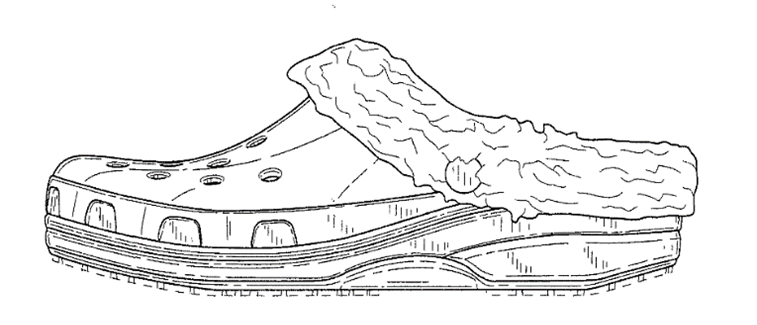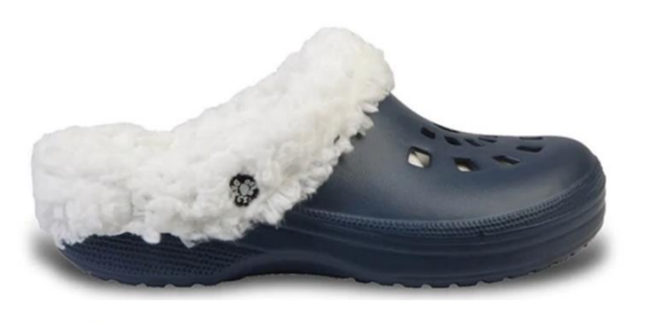
Crocs’ Design Takes a Bite Out of the Competition

In a rare Canadian judicial decision on industrial designs, Crocs scored a comprehensive victory against a competitor regarding sales of infringing shoes.
The dispute centered around similar clog-style, fleece-lined shoes sold by Crocs and its competitor, Double Diamond Distribution Ltd. In 2008, Crocs obtained Canadian industrial design registration no. 120,939 (the ‘939 Design) for a variation of its classic clog shoe with a fleece lining and collar. Double Diamond’s “Fleece Dawgs” shoes have been available for sale in Canada since 2008.


‘939 Design (left) versus Fleece Dawgs shoe (right)
Crocs alleged that the Fleece Dawgs shoes were unlawful imitations that did not differ substantially from the ‘939 Design and that consumers would likely confuse the two products. Double Diamond denied these allegations and noted 25 points of differentiation between the ‘939 Design and its Fleece Dawgs shoes. Double Diamond also alleged that the ‘939 Design was invalid for comprising more than one design, lacking originality, being invalidated by the prior art, and having design features dictated solely by utilitarian function.
At issue for the Court was: (1) whether the ‘939 Design was still valid and enforceable before it expired, (2) if so, whether Double Diamond infringed Crocs’ rights in the design, and (3) if Double Diamond did infringe, to what extent would they be liable. The Federal Court sided with Crocs on all counts, holding that the ‘939 Design was valid, Double Diamond had infringed upon Crocs’ rights and Double Diamond was liable to Crocs for both costs and an accounting of profits on the sales of the Fleece Dawgs shoes.
Concerning the validity of the ‘939 Design, the Court held that minor inconsistencies in some views constitute variants of the same design, rather than comprising more than one design. It also held that the design is original, not invalidated by the prior art asserted by Double Diamond, and its features (in particular, its fleece lining) are not dictated solely by utilitarian function.
Notably, the Court held that Double Diamond infringed the ‘939 Design. The question the Court asked in coming to this conclusion was whether the Fleece Dawgs shoes differed substantially from the ‘939 Design. The Court applied a four-part analysis from the perspective of an “informed consumer”, with the steps of: (i) examining the prior art and the extent to which the registered design differs from any previously published designs; (ii) assessing the design for any utilitarian function, or any method or principle of manufacture or construction; (iii) examining the design itself to determine the scope of protection based on the figures and accompanying description in the registration; and (iv) conducting a comparative analysis of the registered design and alleged infringing article, taking the first three factors into account.
The Court held that there are substantial differences between the ‘939 Design and the prior art, and the features of the ‘939 Design are not dictated solely by utilitarian function. The scope of protection included the visual features of the shoe, as shown in the figures, except the pattern on the sole and parts of the shoe that were shown in stippled lines. The fourth step of the test formed the crux of the infringement analysis. The Court held that the comparative analysis must be made from the perspective of an informed consumer, who is someone familiar with the market field. The Court also emphasized that the comparison must consider the designs in their entirety, as opposed to in part. Considering the overall designs of the two articles, and despite the 25 points of differentiation put forward by Double Diamond, the Court held the designs were not substantially different. There are slight, ornamental differences between the two shoes, but they share key features that are not present in the prior art. The Court held that the points of differentiation asserted by Double Diamond were “little things” in the nature of minutiae. Therefore, the ‘939 Design was infringed.
The Court held that Crocs was entitled to an accounting of profits from the sales of the Fleece Dawgs shoes from November 2018, three years before the action commenced, through to December 2018, when the ‘939 Design expired. The design legislation sets out that no remedy may be awarded for acts of infringement that occurred more than three years before an action for infringement was commenced.
This decision is one of many victories for Crocs, who have a history of pursuing imitators of their popular clogs. Crocs have relied on industrial designs to protect their products around the world, and recently successfully asserted another design against Double Diamond in the United States.
This case serves as an important example of a Canadian industrial design registration being successfully enforced. This should be seen as welcome news for owners of Canadian industrial design rights. This case also provides much-needed guidance on several aspects of industrial design law in Canada, including infringement analysis and the “informed consumer”, how to assess functionality and prior art, interpreting inconsistent drawings, considering designs as whole articles, and assessment of damages.
Double Diamond is appealing the decision.



